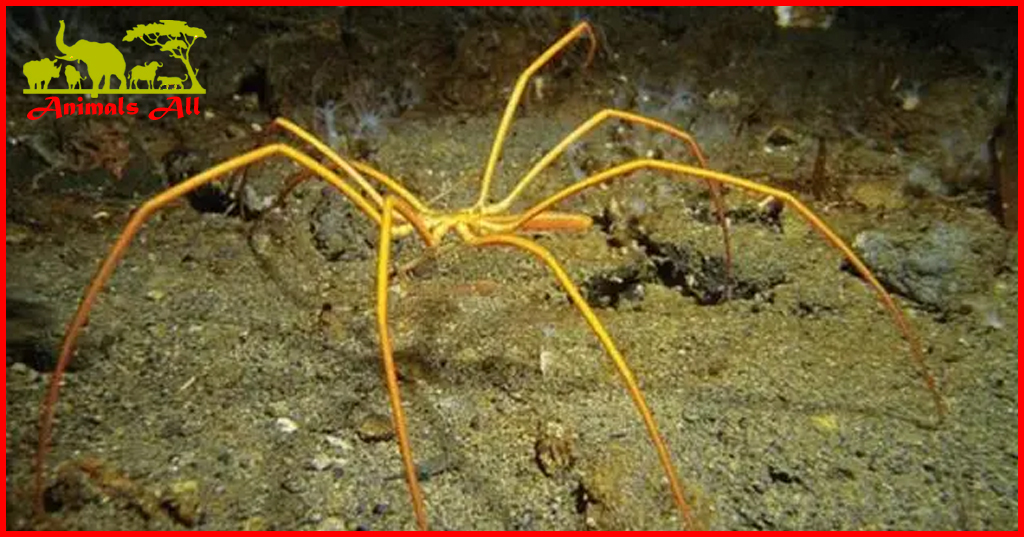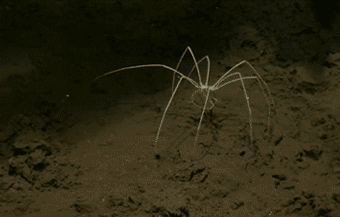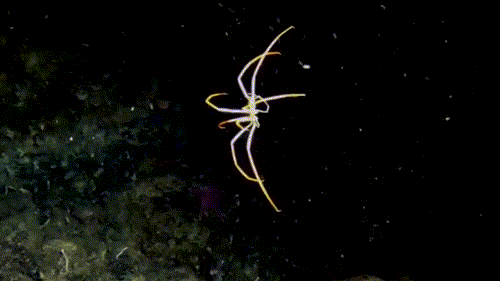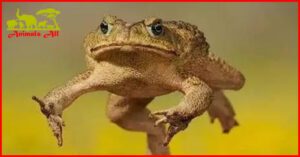
Sea spider have used 500 million years to prove this truth
In order to survive, animals usually evolve various special abilities due to the influence of the environment. For example, giraffes evolved super long necks to better eat branches and leaves , and chameleons can use body pigments to change color in order to avoid predators and hunting .
But there is a creature whose secret to survival is to keep enough “waste”. What kind of creature is this? The answer is sea spider , a strange creature that lives deep under the sea .
Scientists have discovered through fossil research that this creature can be traced back to 500 million years ago . From the beginning of its birth, it chose to be a ” waste ” and it had almost no evolution during this period . Why didn’t sea spiders evolve different abilities like other creatures over such a long period of time?
How do they avoid the pressure of survival during this period? Do sea spiders survive and hunt like spiders? Do sea spiders have natural enemies? This article will answer these questions from the perspective of sea spiders’ living habits and ecological evolution. Next, let’s see how sea spiders have personally proved this truth in their 500 million years of growth history: “As long as there is enough waste, there will be no natural enemies” ?

Weird-looking marine “spider”
This is a species that lives widely under the ocean and can be found in almost every ocean around the world . But if you want to know whether sea spiders are like land spiders, let’s start with their physiological structure .
They have no spine , are covered with an exoskeleton, have a segmented body and paired joints and appendages. Indeed, sea spiders are arthropods in all respects , but unlike spiders, the forelimbs of spiders have evolved into chelicerae. Based on their morphology and developmental system, spiders are classified in the class Arachnida .
Strictly speaking, sea spiders are not considered to be in the class Arachnida. Although they have chelicerae like spiders, other physiological structures, such as the developmental system and external skeletal structure, do not to any known species of arthropods. In addition, genetic studies have shown that sea spiders should be the “sister group” of other arthropods. Currently, sea spiders are classified separately in the class Arachnida.

Sea spiders have a very simple structure, almost only legs , especially in the larval stage, their bodies are only composed of chelicerae, tentacles and egg sacs. Until they are fully mature, the chest and abdomen will not be fully developed. Due to the ancient growth pattern of sea spiders , scientists believe that they reflect how the ancestors of arthropods evolved.
They can be found from Australia and New Zealand to the United States, the Mediterranean Sea, and even in the Antarctic and Arctic. Most of the time they live in shallow waters , but a considerable number of sea spiders can live in the deep sea of 7,000 meters .

Class Chelicerata
Biologists have classified more than 1,300 species of sea spiders , and many believe that they, horseshoe crabs and arachnids all belong to the class Chelicerata. However, current theories suggest that the chelicerae of sea spiders are unique among existing arthropods , and if there is no homology found in the hypothetical origin of the chelicerae in the previous true chelicerates, then they are clearly not arachnids .

Therefore, scientists now give sea spiders a separate category . Other related research is still ongoing, mainly on the evolutionary relationship between sea spider appendages, other limbs and protocerebral appendages . So how do their limbs differ from those of other arthropods?
Seabed “waste”
The slender limbs of sea spiders are closely related to their survival, and this also indirectly shows how “useless” sea spiders are. Although sea spiders have long legs like spiders, they are far less flexible than spiders . The movements of sea spiders look like funny stilt walkers . Once the water disturbance becomes large, they are completely out of their control.

Sea spiders do have long legs, but they are small and weak, with thin legs that are no different from toothpicks. However, their legs are connected to their digestive and circulatory systems .
Their legs have many tiny pores that enable effective breathing through direct diffusion . After oxygen is absorbed into the legs, it is transported to other parts of the body through hemolymph. In order to maintain this oxygen transport and blood circulation, the heart beats at a rate of 90 to 180 times per minute , and the resulting high blood pressure will promote circulation in the legs or near the trunk.
Why are all these important things concentrated in the legs? This is the most special thing about sea spiders . They have an open circulatory system and a nervous system composed of a brain, although these structures are very simple.
Most of the time, these nerve activities will give priority to the legs , because the digestive system of sea spiders is all in the legs. After all, in order to survive, eating is definitely the first thing to do, and not eating means no energy. As for their mouths, the mouths of sea spiders are actually a “proboscis” structure that can inject digestive juices into the body of the prey, and finally absorb them through the pores in the legs.

Respiratory system
Similar to their respiratory system, the spiracles on their legs help them absorb nutrients from other invertebrates, and the digestive tract of sea spiders is connected to the diverticula in their legs. This is a digestive organ unique to mollusks . Although they are arthropods, don’t forget that the hard exoskeleton actually contains a soft body .
Sea spiders are clumsy and do not have the excellent and efficient hunting ability of other predators. They only look for creatures weaker than themselves , such as sponges, bryozoans, and polychaetes, which are extremely primitive and almost motionless . If they cannot eat these things, sea spiders will choose to eat marine garbage and animal carcasses.

Since sea spiders are almost made up of legs and covered with exoskeletons, eating them is like eating bones. This inconspicuous creature with almost no nutritional value will obviously not become food for other animals. For 500 million years , the morphology of sea spiders has hardly changed . From the perspective of biological evolution, the evolution of a species is often accompanied by survival pressure . Environmental changes force organisms to change and adapt to nature. Evolution is actually a natural selection .
But sea spiders are different. Their hunting ability is basically zero , and they have no potential value. No higher-level animal would choose to eat them to replenish their energy. Sea spiders that are too “useless” lack this kind of survival pressure , so they are too lazy to evolve. Since they can live well, they don’t need to spend so much energy to choose to evolve.

No living thing can stop them from continuing to waste.
But do they really have no natural enemies at all ? In fact, every creature has a corresponding enemy, whether biological or natural. However, sea spiders are special because they are too “useless” and therefore lack natural enemies in the traditional sense .
But as we mentioned earlier, sea spiders eat bryozoans . In turn, bryozoans can also pose a threat to sea spiders. They are another group of lower organisms in the ocean that can only find non-living or living things to attach to.
If attached to a sea spider, the impact between the organisms is two-way . On the one hand, the sea spider will use its proboscis to penetrate the individual bryozoan to suck food, or directly use its chelae to tear these invaders apart. The most direct way is to wait until the molting time, and then throw away the contaminated “clothes” directly after the molting is completed.
However, if sea spiders encounter the breeding season, their molting behavior will stop , because their reproduction requires carrying eggs. Therefore, it provides an excellent opportunity for the growth of bryozoans. Too many bryozoans may cover their joints, which will eventually seriously interfere with the survival of sea spiders and even their feeding.
In short, it is not surprising that this phenomenon happens to sea spiders . After all, there is nothing else they can do. If they can’t find food, they can eat the bryozoans on their bodies. Although sea spiders are one of the few creatures on the seabed that are so “wasteful” that even their food can affect them, we have to admit that this waste strategy helps them avoid most crises. Lying down and letting things rot is the ultimate way for sea spiders to survive .


One thought on “Sea spider have used 500 million years to prove this truth”